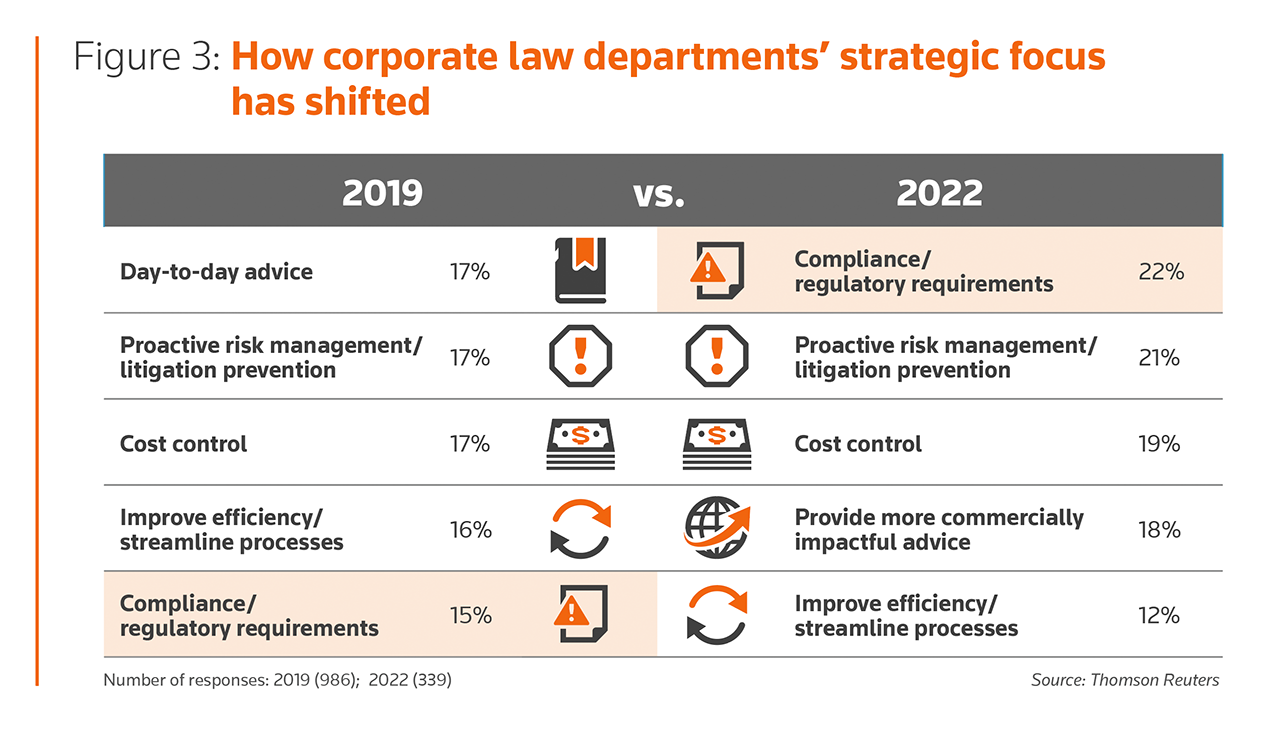2023 State of the Corporate Law Department: Three Key Takeaways

Complying with growing global regulatory complexity represents the biggest legal threat to businesses, according to the 2023 State of the Corporate Law Department report from the Thomson Reuters Institute. The report found that 28% of global law departments cite frequency and complexity of regulatory changes as the biggest anticipated risk to their business.
Legal Current shares key findings of the report, which is based on nearly 1,600 interviews conducted with professionals in corporate law departments of companies with more than $1 billion in global revenue.
- Compliance is the top priority for corporate law departments, globally, after ranking as only the fifth-highest priority in 2019. Risk and litigation mitigation was the next highest priority for global law departments, reflecting the impact that the changing regulatory environment has on today’s corporations.
- Cost control ranks as the third-highest priority globally; among U.S. companies, it’s the number-one priority. A perennial concern for corporate in-house legal teams, the findings align with 2022 Legal Department Operations Index research that showed 85% of corporate law department operations professionals identified controlling outside counsel costs as a top priority. There’s growing evidence of corporate law departments shifting work among outside law firms to better manage costs.
- Though 65% of corporate law departments are experiencing increasing matter volumes, 59% are dealing with flat, if not decreasing, budgets. The increasing level of matter volumes is being driven by growing global regulatory complexity and the fallout from the global economic slowdown. In addition, the percentage of companies anticipating a higher legal spend in the coming 12 months has remained strong; 41% of corporate law departments expect to see an increase in their legal spend. This suggests that despite ongoing economic uncertainty, law departments are operating under cautious optimism.
“As workloads and uncertainties rise, there is also a greater willingness to shift work to smaller firms with a lower cost, and technology can help departments make data-based decisions without compromising outcome,” said Hillary McNally, general manager, corporate legal, Thomson Reuters. “Investments in legal content and workflow can also help close the gap for legal departments, create process improvement, enhance collaboration, and attract and retain top talent. This can help departments get up to speed on new areas of law quickly and offload tasks that can be automated, freeing up time for more high-value work, which is critical during times of turbulence.”
For more insights on how corporate legal departments are managing risk, mitigating litigation, and controlling costs, download the full report.